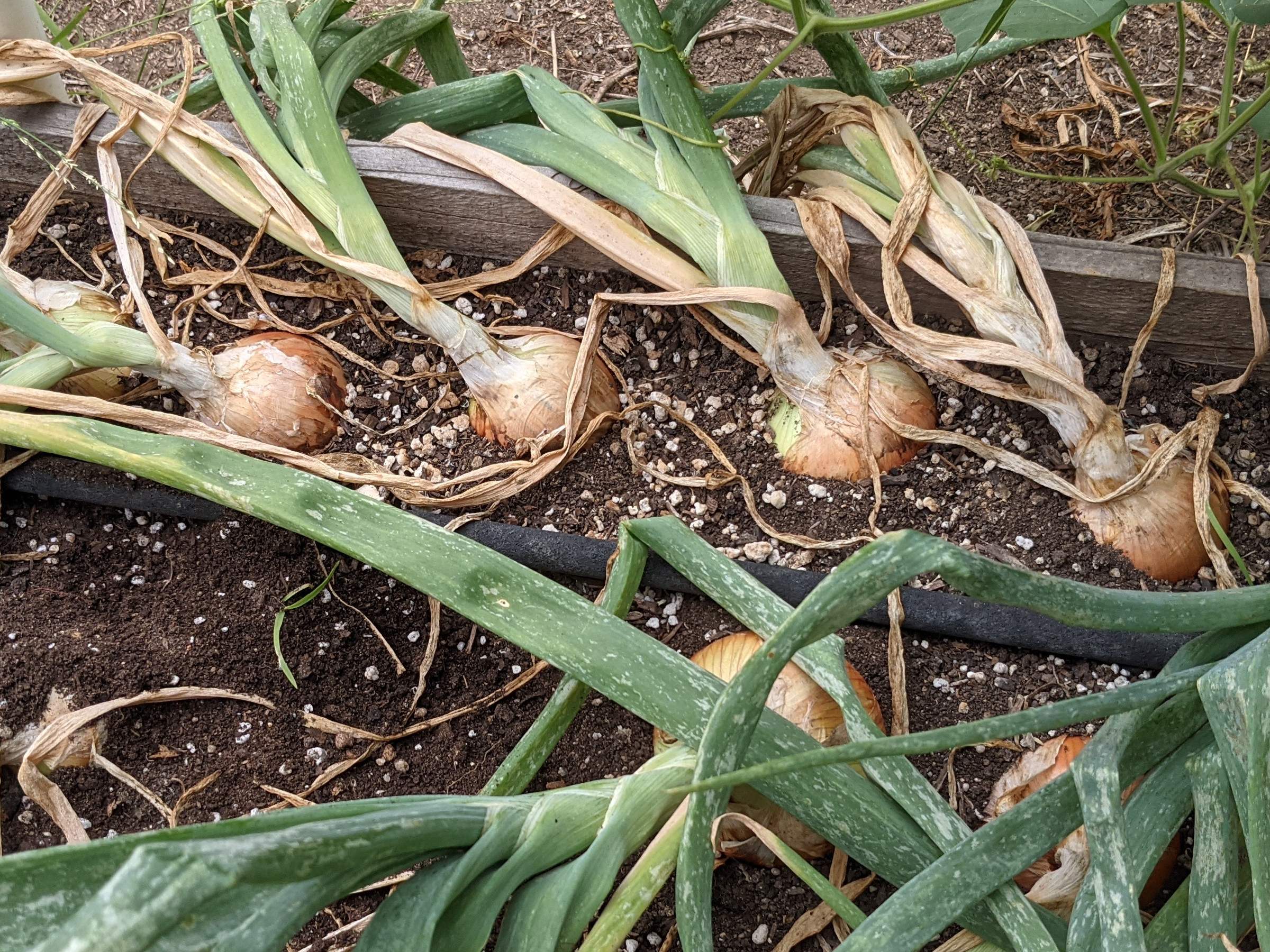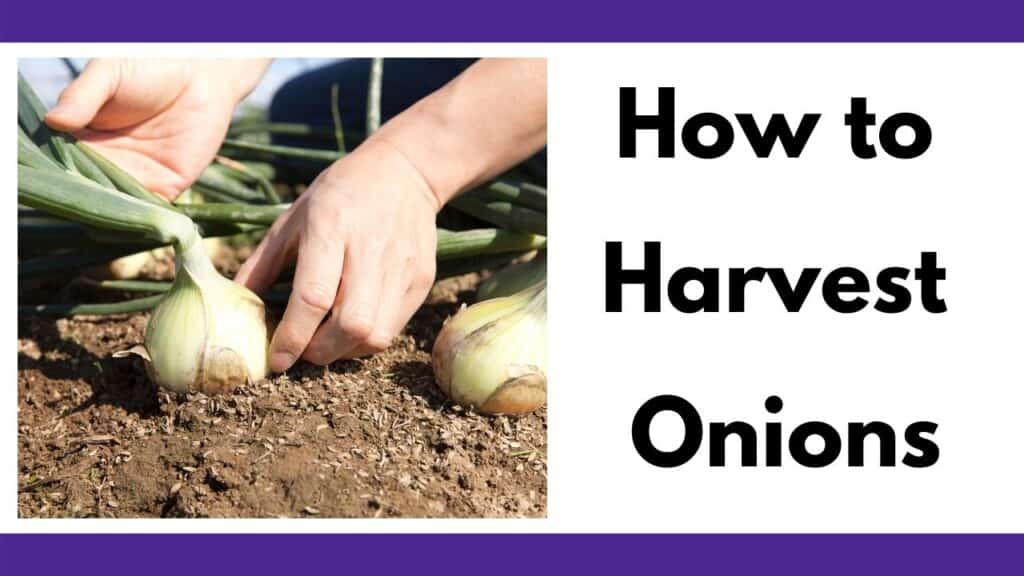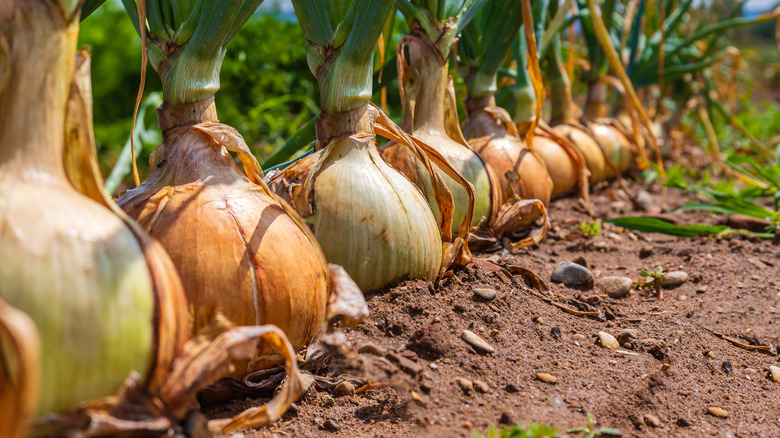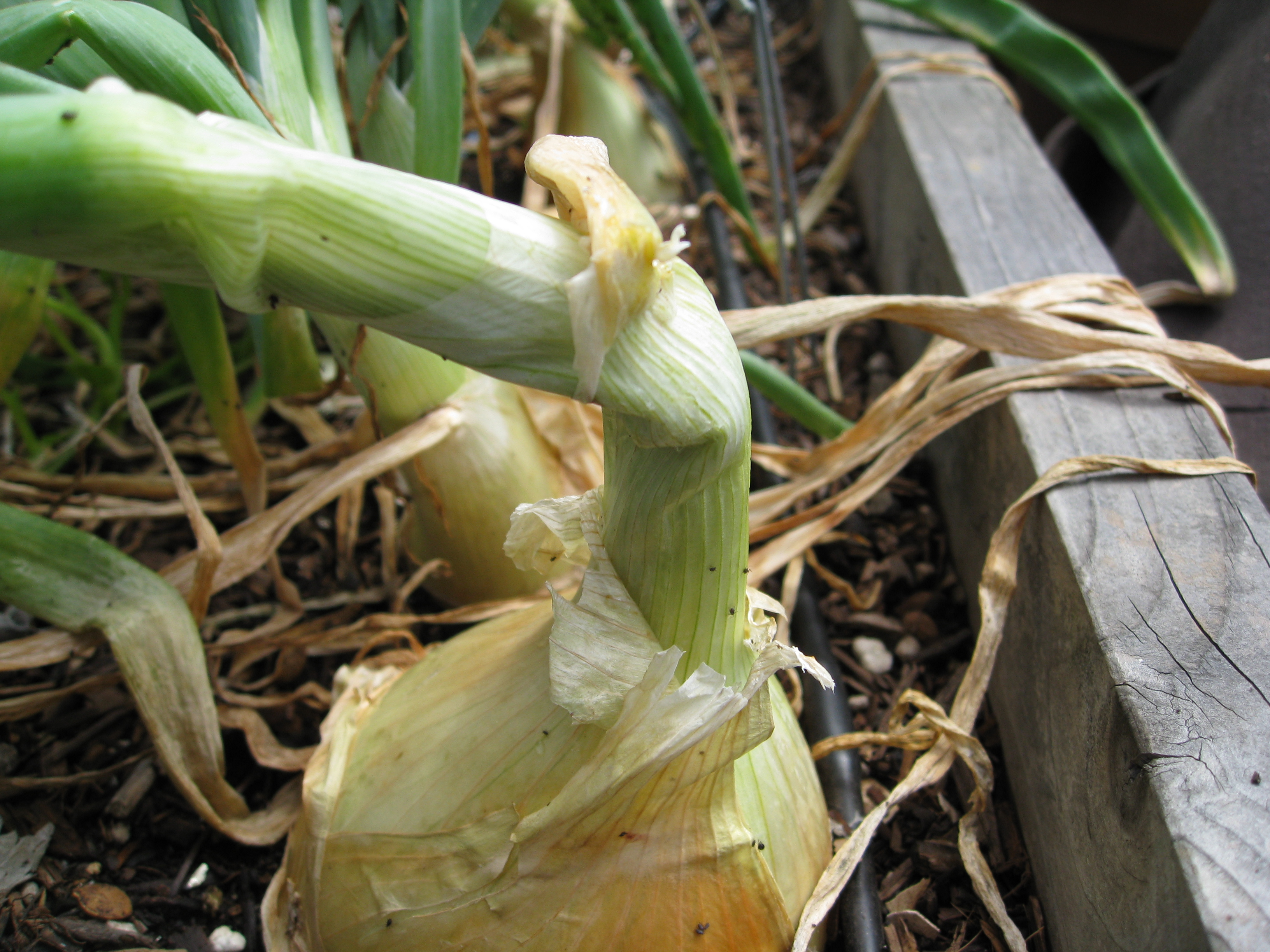How to Identify Ready-to-Harvest Onions
Harvesting onions at the right time is crucial to ensure optimal flavor, texture, and storage quality. Onions that are harvested too early or too late can be disappointing, with a lackluster flavor and a shorter shelf life. So, what do onions look like when ready to harvest? The answer lies in understanding the physical changes that occur in onions as they mature.
Onions are ready to harvest when the tops of the plants begin to yellow and fall over. This is a natural process that occurs as the onion bulb reaches maturity. As the tops dry and turn brown, the onion bulb is signaling that it is ready to be harvested. However, it’s essential to check the onion bulb itself to confirm readiness.
A ready-to-harvest onion will have a firm, compact bulb with a papery wrapper that is dry and rustling. The neck of the onion will be soft and yielding to the touch, indicating that the onion is fully mature. If the onion is not yet ready, the neck will be stiff and green.
It’s also important to note that different onion varieties have varying harvest times. For example, yellow onions are typically ready to harvest in mid to late summer, while red onions are ready in late summer to early fall. Understanding the specific harvest time for your onion variety will help you determine when to start checking for readiness.
By harvesting onions at the right time, you can enjoy a bountiful crop with optimal flavor and texture. Whether you’re a seasoned gardener or a beginner, knowing what to look for when harvesting onions will help you get the most out of your crop.
Visual Cues for Onion Readiness
As onions mature, they undergo a series of physical changes that signal their readiness for harvest. One of the most noticeable changes is the yellowing or browning of the tops, which can be a clear indication that the onion is ready to be picked. However, it’s essential to inspect the onion more closely to confirm its readiness.
A ready-to-harvest onion will typically have a soft, yielding neck, which is a result of the onion’s natural process of maturation. The neck will be slightly indented, and the skin will be dry and papery. This is a critical visual cue, as it indicates that the onion has stopped growing and is ready to be harvested.
Another visual cue to look for is the formation of a papery wrapper around the onion bulb. This wrapper, also known as the “tunic,” is a natural protective layer that forms as the onion matures. A ready-to-harvest onion will have a dry, rustling tunic that is easy to remove.
It’s also important to note that the color of the onion can be an indicator of its readiness. For example, yellow onions will typically turn a light golden color as they mature, while red onions will deepen in color to a rich, burgundy hue.
By paying attention to these visual cues, you can determine what onions look like when ready to harvest and enjoy a bountiful crop of delicious, flavorful onions.
Checking for Onion Maturity
To determine if an onion is ready to harvest, it’s essential to check for maturity. One way to do this is to gently dig around the onion to inspect the bulb. Use a fork or a spade to carefully loosen the soil around the onion, taking care not to damage the bulb.
As you inspect the bulb, check for a sweet, oniony aroma. A mature onion will give off a pungent, sweet smell that is unmistakable. If the onion doesn’t have a strong aroma, it may not be ready to harvest yet.
Another way to check for maturity is to feel the bulb. A mature onion will be firm and compact, with no soft spots or signs of rot. If the onion feels soft or mushy, it may be past its prime.
It’s also important to check the size of the onion. Most onion varieties will be ready to harvest when the bulb is between 1-2 inches in diameter. However, some varieties may be larger or smaller, so it’s essential to check the specific variety you are growing.
By checking for these signs of maturity, you can determine what onions look like when ready to harvest and enjoy a bountiful crop of delicious, flavorful onions.
Understanding Onion Varieties and Their Harvest Times
Onions come in a variety of shapes, sizes, and colors, each with its own unique characteristics and harvest times. Understanding the different types of onions and their specific harvest times is crucial to ensuring a successful harvest.
Yellow onions, for example, are one of the most common varieties and are typically ready to harvest in mid to late summer. They have a strong, sweet flavor and a firm, dense texture that makes them ideal for cooking and storing.
White onions, on the other hand, are harvested in late summer to early fall and have a sweeter, milder flavor than yellow onions. They are often used in salads, salsas, and other dishes where a mild onion flavor is desired.
Red onions are harvested in late summer to early fall and have a beautiful, deep red color. They have a sweet, mild flavor and a crunchy texture that makes them ideal for using in salads, grilling, and roasting.
Other varieties of onions, such as shallots and scallions, have different harvest times and uses. Shallots, for example, are harvested in late summer to early fall and have a mild, sweet flavor that makes them ideal for using in sauces and soups. Scallions, on the other hand, are harvested in early spring to early summer and have a mild, oniony flavor that makes them ideal for using in salads and as a garnish.
By understanding the different types of onions and their specific harvest times, you can ensure a successful harvest and enjoy a variety of delicious onions throughout the year.
How to Harvest Onions for Storage
Harvesting onions for storage requires careful attention to detail to ensure that the onions remain fresh and flavorful for a long time. Here are some best practices to follow:
First, make sure to dry the onions thoroughly after harvesting. This can be done by spreading them out in a single layer on a wire rack or tray, allowing air to circulate around each onion. This step is crucial in preventing moisture from accumulating and causing the onions to rot.
Next, remove any excess foliage from the onions, leaving only a small amount of stem attached to the bulb. This will help to prevent moisture from entering the onion and causing it to spoil.
Once the onions are dry and free of excess foliage, store them in a cool, dry place with good ventilation. A temperature range of 40-50°F (4-10°C) is ideal for storing onions, as it slows down the ripening process and helps to preserve the onions’ flavor and texture.
It’s also important to store the onions in a way that allows for good air circulation around each bulb. This can be achieved by storing them in a mesh bag or a breathable container, such as a paper bag or a cardboard box with holes punched in it.
By following these best practices, you can enjoy your freshly harvested onions for a long time and make the most of your crop.
Tips for Harvesting Onions in Different Weather Conditions
Weather conditions can play a significant role in the harvesting of onions. Whether it’s a hot and dry spell or a period of heavy rainfall, it’s essential to know how to adapt your harvesting techniques to ensure a successful crop.
During hot and dry weather, it’s crucial to harvest onions in the early morning or late evening when the temperature is cooler. This will help prevent the onions from becoming dehydrated and developing a bitter flavor.
In contrast, after heavy rainfall, it’s best to wait a few days before harvesting onions. This allows the soil to dry out slightly, making it easier to dig up the onions without damaging them.
It’s also important to protect the onions from damage and disease during extreme weather conditions. For example, during periods of heavy rainfall, the onions may be more susceptible to fungal diseases such as downy mildew. To prevent this, make sure to remove any excess foliage and dry the onions thoroughly after harvesting.
In addition, consider using row covers or other forms of protection to shield the onions from extreme weather conditions. This can help prevent damage to the onions and reduce the risk of disease.
By being aware of the weather conditions and adapting your harvesting techniques accordingly, you can ensure a successful crop of onions and enjoy them for months to come.
Common Mistakes to Avoid When Harvesting Onions
Harvesting onions can be a straightforward process, but there are some common mistakes to avoid in order to ensure a successful crop. One of the most common mistakes is pulling the onions out of the ground instead of digging carefully around them. This can cause damage to the bulb and lead to rot or decay.
Another mistake to avoid is harvesting onions too early or too late. Onions that are harvested too early may not have reached their full flavor and texture potential, while onions that are harvested too late may be over-mature and prone to spoilage.
It’s also important to avoid harvesting onions during extreme weather conditions, such as during heavy rainfall or intense heat. This can cause the onions to become waterlogged or dehydrated, leading to a lower quality crop.
In addition, be sure to handle the onions gently during harvesting to avoid bruising or damaging the bulbs. This can cause the onions to spoil more quickly and reduce their storage life.
By avoiding these common mistakes, you can ensure a successful onion harvest and enjoy a bountiful crop of delicious, flavorful onions.
Enjoying Your Freshly Harvested Onions
Now that you’ve successfully harvested your onions, it’s time to enjoy them in a variety of delicious dishes. Whether you’re looking for a savory meal or a sweet treat, onions are a versatile ingredient that can add flavor and depth to any recipe.
One of the simplest ways to enjoy your freshly harvested onions is to use them in a classic caramelized onion recipe. Simply slice the onions thinly and cook them in a pan with some oil until they’re soft and golden brown. You can then use them as a topping for burgers, salads, or sandwiches.
Onions are also a great addition to soups and stews. They add a depth of flavor and a bit of sweetness that can elevate any dish. Try adding some sliced onions to your favorite soup or stew recipe for a delicious and comforting meal.
If you’re looking for something a bit more adventurous, you could try making some onion jam. This sweet and tangy condiment is made by cooking down onions with some sugar and vinegar until they’re soft and syrupy. It’s a great topping for crackers or bread, and it’s also delicious as a side dish for grilled meats or cheeses.
Finally, don’t forget to enjoy your freshly harvested onions in their raw form. Thinly slice some onions and add them to a salad or use them as a topping for a sandwich. You can also use them as a garnish for soups or other dishes.
With these recipe ideas and inspiration, you’ll be able to enjoy your freshly harvested onions in a variety of delicious ways. So go ahead, get creative, and make the most of your homegrown onions!









